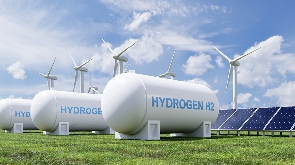A new report authored by cross-cutting multi-stakeholder experts in energy, economics, policy, and technology is optimistic about the near future prospects of hydrogen as a huge source of energy.
The experts have demonstrated in the report the commercial viability of the hydrogen production business and its vast contribution to the fight against climate change, job creation, and technological advancement.
Tittled “Pathways to Commercial Liftoff: Clean Hydrogen,” the report, which has been welcomed by the U.S. Department of Energy, said the U.S. clean hydrogen market is poised for rapid growth, accelerated by Hydrogen Hub funding, multiple tax credits under the Inflation Reduction Act (IRA), including the hydrogen production tax credit (PTC), the U.S. Department of Energy’s Hydrogen Shot, and decarbonization goals across the public and private sectors.
“Hydrogen can play a role in decarbonizing up to 25% of global energy-related CO2 emissions, particularly in industrial/chemical uses and heavy-duty transportation sectors,” the report explains.
The experts posit that achieving commercial liftoff will enable clean hydrogen to play a critical role in the decarbonization strategy.
They claimed that the clean hydrogen market will be accelerated by historic commitments to America’s clean energy economy, including equities in the Inflation Reduction Act (IRA) and the Infrastructure Investment and Jobs Act (IIJA).
“Together, these supply-side incentives can make clean hydrogen cost-competitive with incumbent technologies in the next 3–5 years for numerous applications.”
The report stated that Hydrogen deployment is an opportunity to provide benefits to communities.
These benefits include quality jobs and decreased air pollution.
“As with all new technologies, significant care and attention must be paid during implementation to ensure that deployment does not perpetuate existing inequities within the energy system.”
According to the report, clean hydrogen production for domestic demand has the potential to scale from one million metric tons per year (MMTpa) to ten million metric tons per year (10 MMTpa) in 2030.
Most near-term demand will come from transitioning existing end-uses away from the current ~10 MMTpa of carbon-intensive hydrogen production capacity.
If water electrolysis dominates as the production method, up to 200 GW of new renewable energy sources would be needed by 2030 in the US alone to support clean hydrogen production.
Scaling the market will require continuing work on addressing demand-side challenges.
For example, scaling midstream infrastructure will drastically lower the delivered cost of hydrogen outside of co-located production and offtake, improving the business case for projects and accelerating the uptake of clean hydrogen.
Bolstering demand and unlocking long term offtake will support the current proliferation of hydrogen production project announcements and help those production projects reach final investment decision.
The report said in the present policy environment, commercial ‘liftoff’ for clean hydrogen is expected to take place in three phases: Near-term expansion (2023–2026):, industrial scaling (2027-2034): and Long Term growth (2035+).
The U.S. has the opportunity to lead in the production, safe handling and distribution, and responsible end-use of lean hydrogen as it scales globally.
The Pathways to Commercial Liftoff report aims to establish a common fact base and an ongoing dialogue with the private sector around the path to commercial liftoff for critical clean energy technologies.
The goal is to catalyze more rapid and coordinated action across the full technology value chain.
Hydrogen fuel cells generate electricity by combining hydrogen and oxygen atoms.
“The hydrogen reacts with oxygen via an electrochemical cell similar to that of a battery to produce electricity, water, and small amounts of heat.”
Business News of Sunday, 23 April 2023
Source: gbcghanaonline.com
Commercial viability of clean hydrogen energy now possible - Report
Entertainment
















